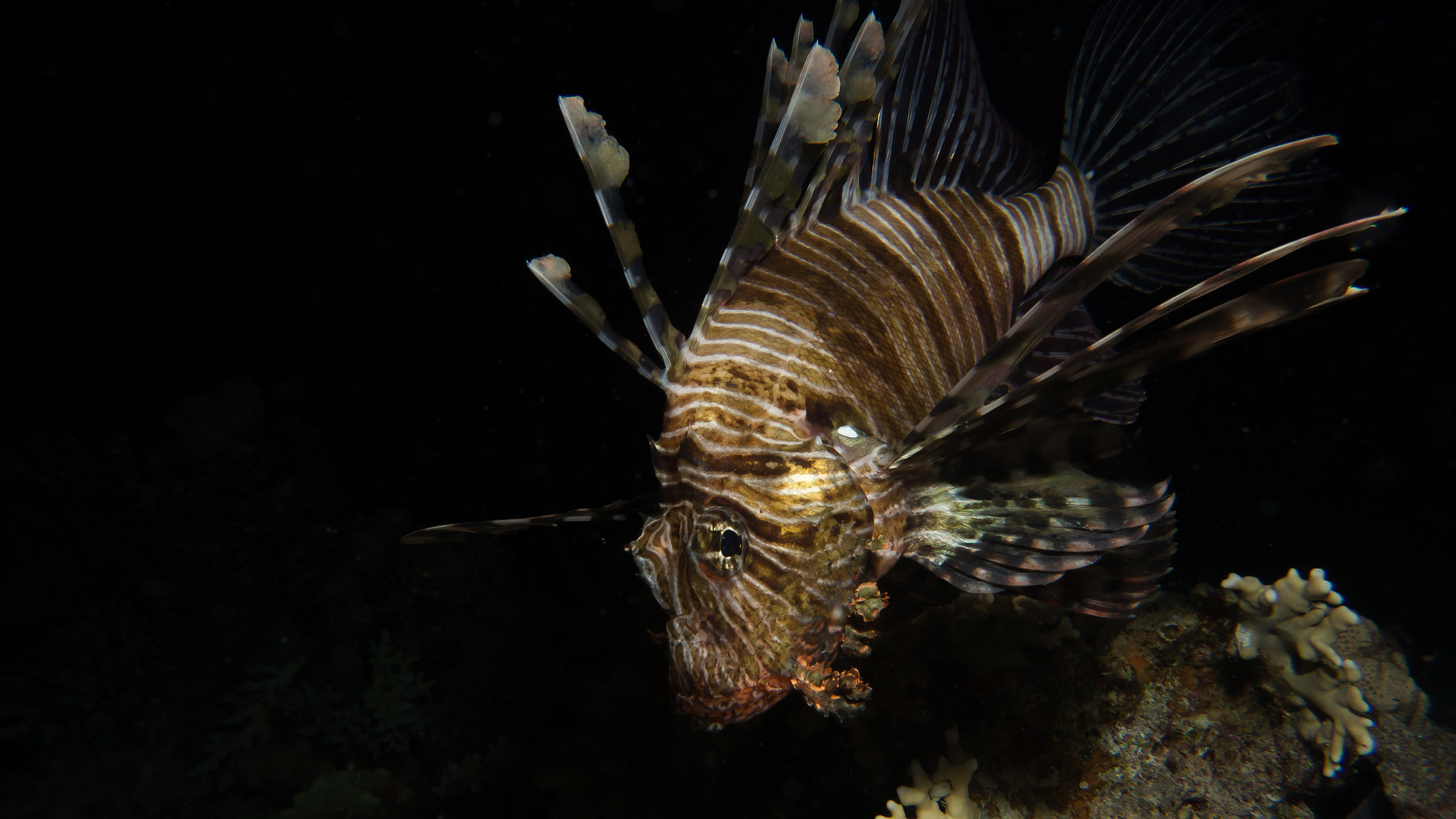
Pterois miles (Devil Firefish) is closely related to better-known Red Lionfish (P. volitans), and can only be distinguished by meristic counts, morphometric, and fine morphological details, or molecular methods. Like its more famous relative. it has long poisonous spines, and white, black and reddish brown stripes. The Devil Firefish is native to the western Indian Ocean, from the Red Sea and East Africa to and Western Indonesia (Sumatra) and where its range overlaps somewhat with P. volitans. Pterois volitans is native to the westernmost Indian Ocean and tropical eastern Pacific. Both species were introduced to Western Atlantic waters by aquariists, probably in Florida waters. In a mitochondrial DNA survey of 755 lionfish in the western Atlantic, from the southern Caribbean to North Carolina and Bermuda, in 2004, only 21 specimens were identified as P. miles. 17 from North Carolina and 4 from Bermuda (Hamner et al. 2007; Betancur-R. et al. 2011).. Consequently, Lionfishes are often referred to as Pterois volitans/miles in Western Atlantic waters Both species are aggressive piscivores, with poisonous spines, but also good eating. While most Western Atlantic Red Lionfishes that have been identified in the Western Atlantic are P. volitans, P. miles has spread from the Red Sea, into the Mediterranean Sea, through the Suez Canal. By 2016, it reached Sicily, and by 2021, the Aegean Sea. Modeling suggest that the range in the Eastern Mediterranean is likely to expand, but expansion into the Western Mediterranean is less likely (Poursanidis et al. 2020).